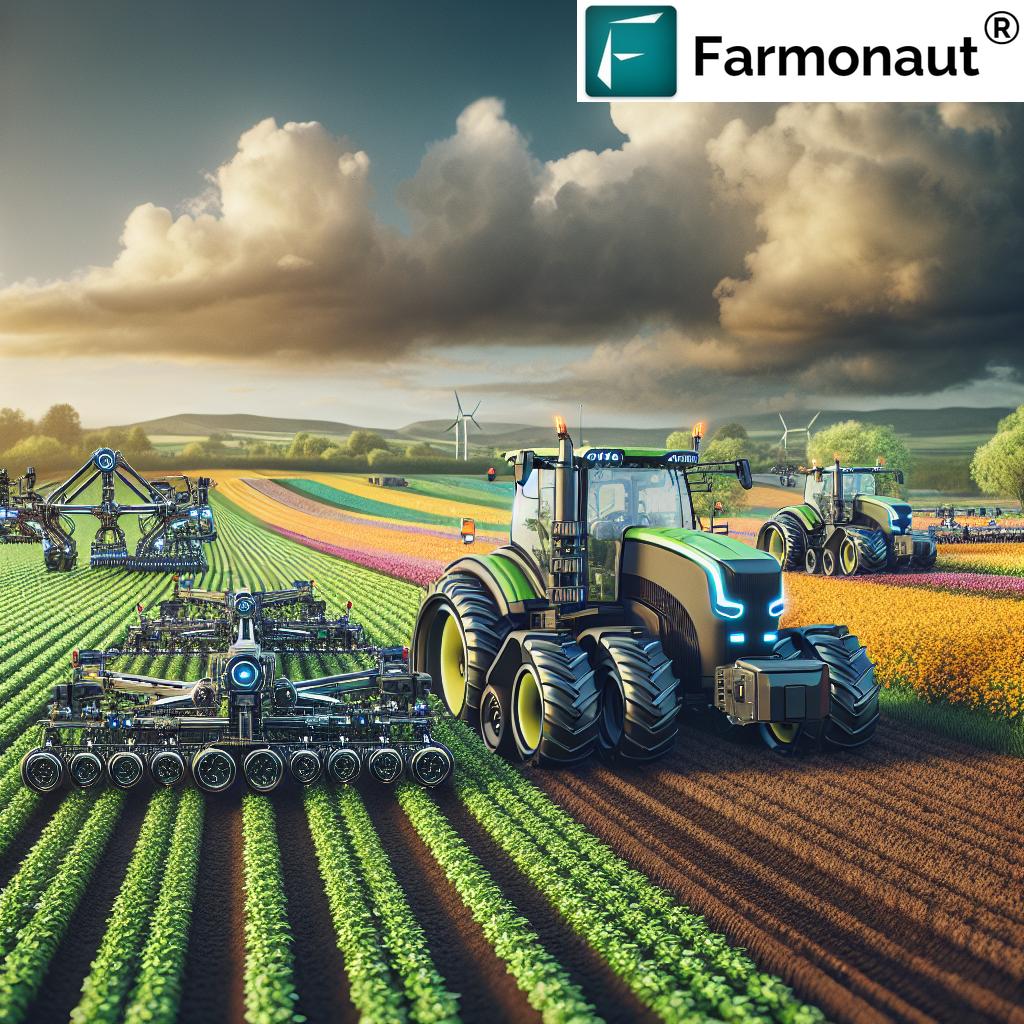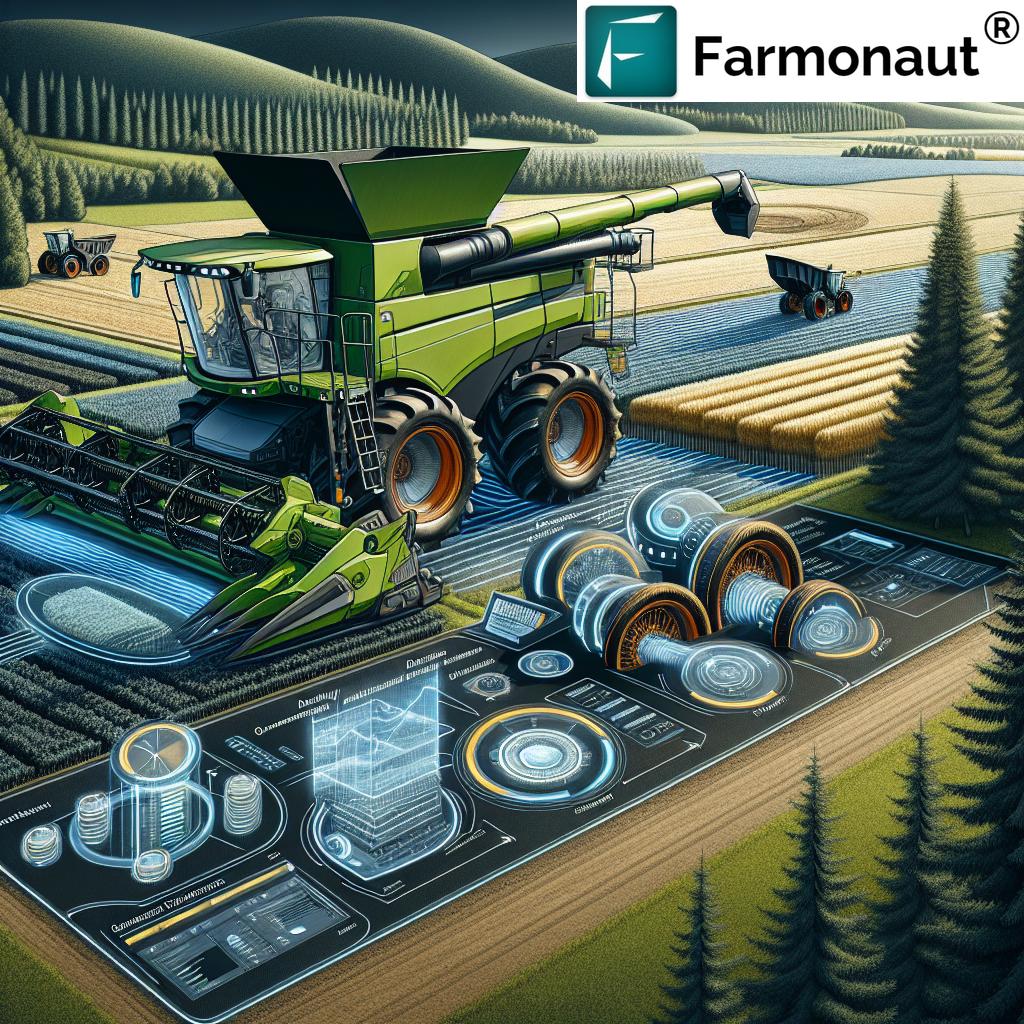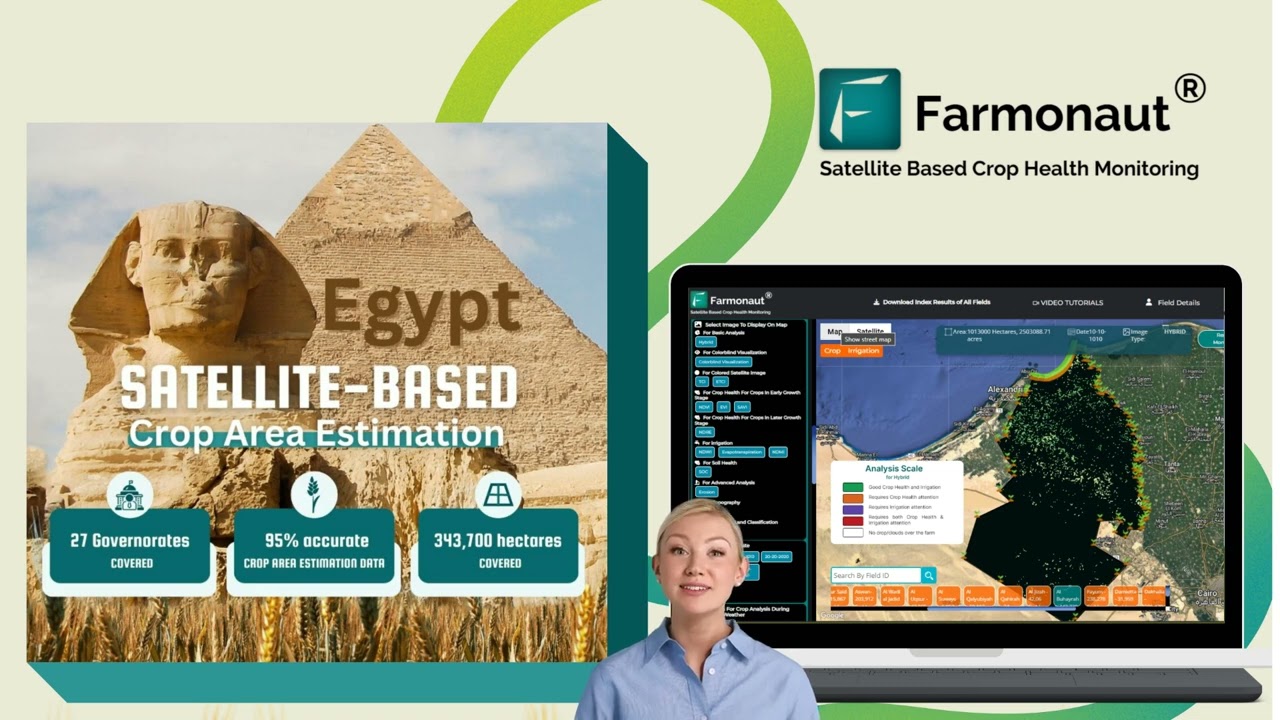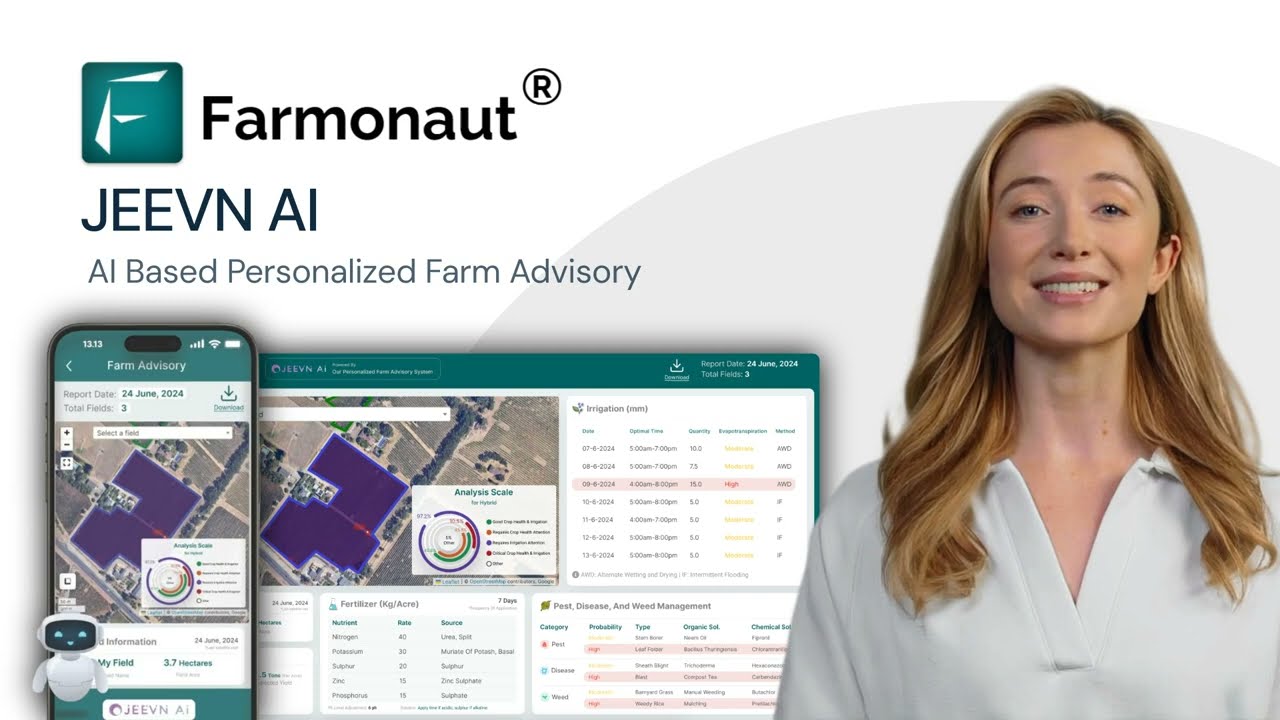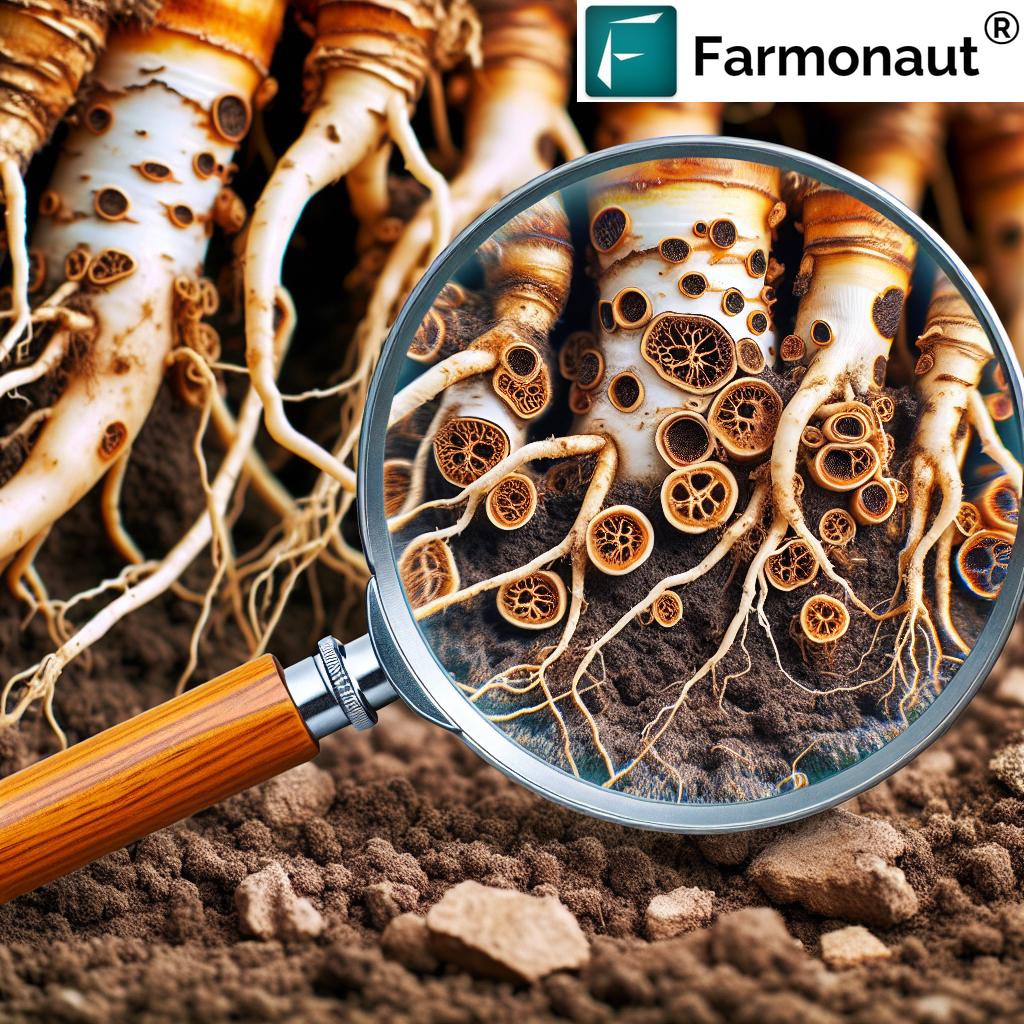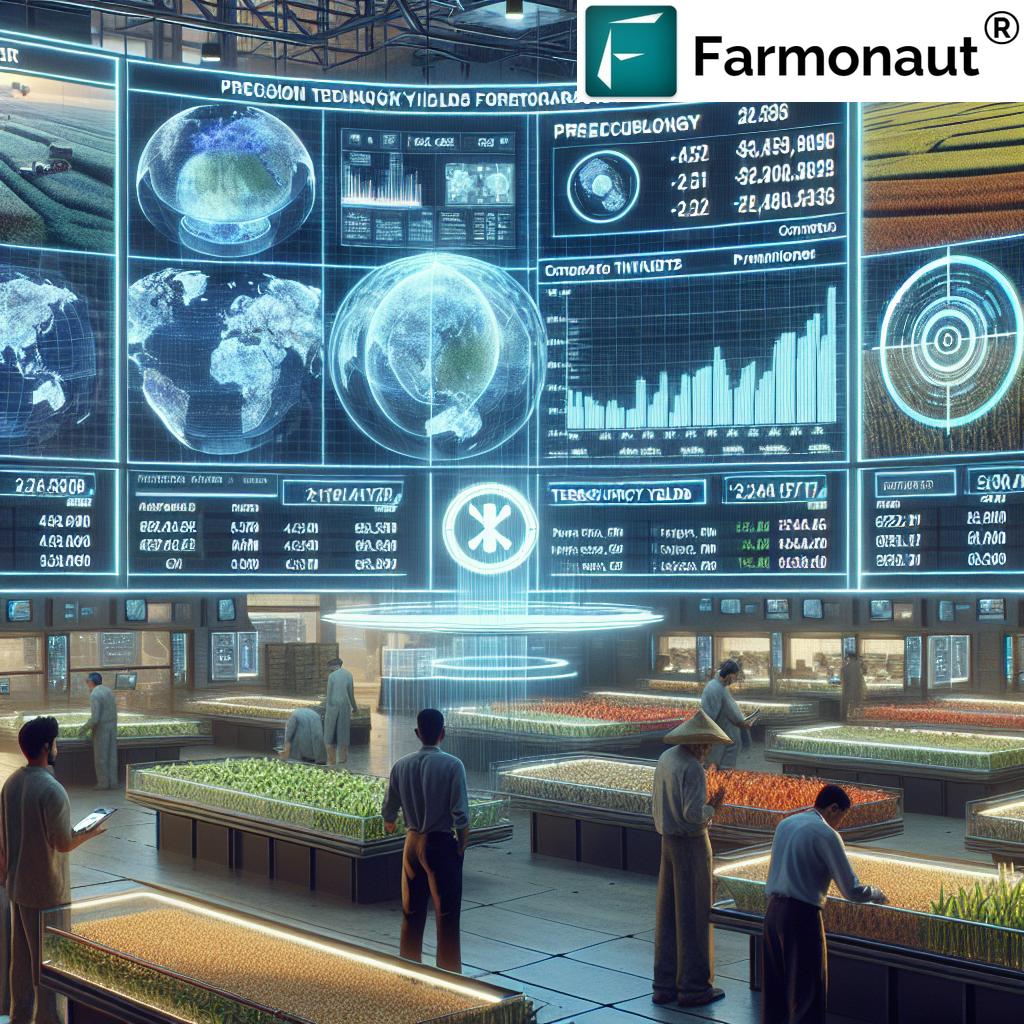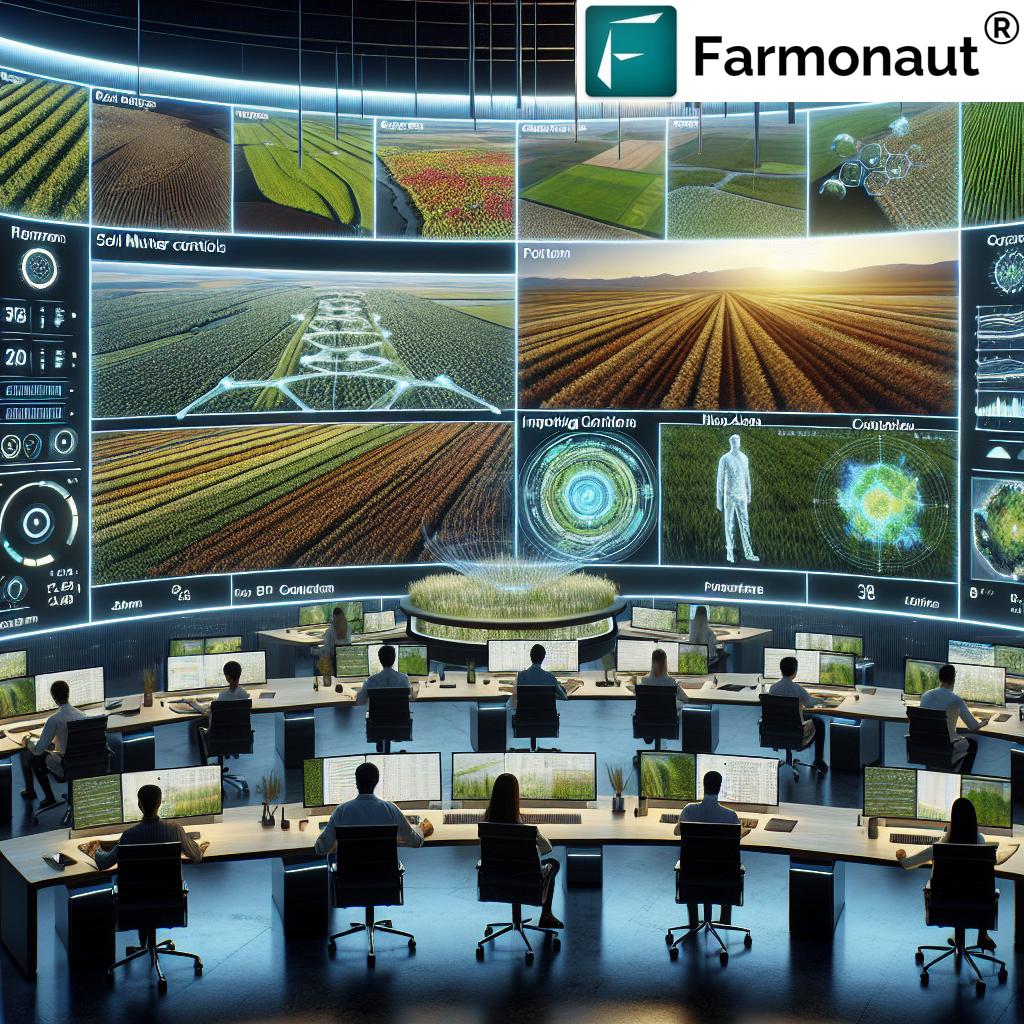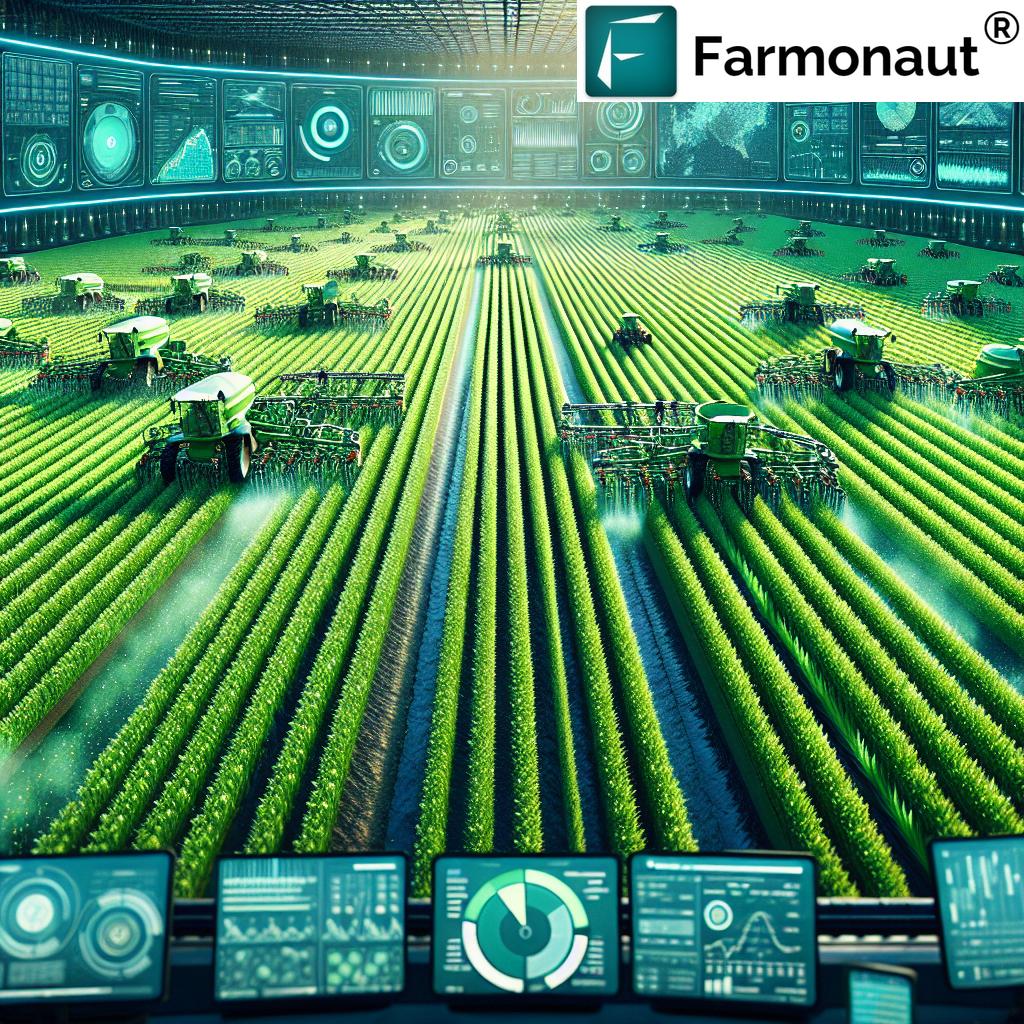Construction Equipment Trends: 7 Key Agri Innovations
Overview: A New Era for Agriculture & Forestry
The agricultural and forestry sectors are witnessing a profound transformation, fueled by rapid advancements in construction equipment technology. Unlike previous decades, today’s landscape is characterized by autonomous agricultural equipment and electric farming machinery that drive greater efficiency, sustainability, and precision agriculture technology adoption. These innovations aim to address persistent challenges such as labor shortages, mounting environmental concerns, and the increasing demand for data-driven farm management and productivity.
In this comprehensive guide, we will delve into the seven key innovations shaping the future of farming and forestry. From autonomous tractors that operate without human intervention, to modular agricultural machinery tailored for diverse operations, and AI-powered solutions that optimize every input—each trend signals a leap forward in the quest for sustainable, high-performing agriculture equipment.
1. Autonomous & Electric Agricultural Machinery: Revolutionizing Farm & Forestry Equipment
Among all agricultural equipment innovations, the integration of autonomous and electric machinery stands out as a game-changer. By merging advanced sensors, AI, and battery technology, brands like John Deere and Kubota are transforming tractors and utility vehicles into high-precision, energy-efficient workhorses.
Autonomous Agricultural Equipment
Autonomous tractors and harvesters are capable of operating without human intervention for hours, even days, on end. By using computer vision, GPS, and an array of sensors, these machines navigate terrains effectively, addressing labor shortages and reducing operational costs. For example, John Deere’s fully autonomous tractor can be monitored remotely and programmed to perform tilling, planting, and even spraying with minimal oversight.
These advanced machines help farmers meet tight planting windows, respond to weather changes, and maximize uptime—all critical in today’s volatile climate. The result is not just increased efficiency, but also improved precision in field operations, supporting higher yields and better resource management.
Electric Farming Machinery
The traction for electric-powered tractors and harvesters is rapidly increasing. Recent models such as Deere’s fully electric utility tractor and Kubota’s LXe-261 (designed specifically for urban farming in Japan) deliver up to 10 hours of reliable battery backup. Their strong sales underscore a growing market shift—helped by government incentives targeting sustainable agriculture practices.
Electric agricultural equipment not only reduces greenhouse gas emissions but can lower on-farm fuel costs by up to 40% compared to traditional diesel-powered machinery.
Besides lower emissions and reduced operational noise, these electric machines are easier to maintain and often integrate seamlessly with “smart” IoT-based platforms for monitoring battery health and system status.
2. Precision Agriculture Technology: Advancements in Data-Driven Crop Management
Precision agriculture is not just a buzzword—it’s the heartbeat of today’s farming technology. By harnessing IoT sensors, artificial intelligence (AI), and machine learning algorithms, farmers can achieve new heights in efficiency and sustainability.
Advanced Crop Monitoring Systems
- Real-time monitoring: IoT sensors deployed across fields track soil conditions, moisture levels, and temperature, feeding data into analytical platforms.
- Precision inputs: Smart platforms analyze sensor data to recommend precise water, fertilizer, and pesticide applications—significantly reducing waste and environmental impact.
- AI-driven detection: Kubota’s AI-enabled machinery can detect crop diseases or pests and enables targeted chemical applications, minimizing unnecessary chemical use.
Such advanced crop monitoring systems form the backbone of data-driven farm management. They enable farmers to take action precisely when and where it’s needed most—resulting in healthier crops, higher yields, and more sustainable use of resources.
Precision Agriculture: Example in Action
Imagine a farm facing irregular soil moisture due to varying terrain. With a smart precision agriculture technology system, moisture sensors and AI analytics recommend targeted watering for only the dry zones. Sensors can also detect specific pest patterns and send out alerts for action—ensuring the right remedy, at the right time, in the right amount.
3. Sustainable Practices & Eco-Friendly Equipment: Building a Greener Future for Agriculture
Sustainable farming solutions represent not only an environmental commitment but a business imperative. Tractors and forestry equipment are being designed with non-toxic hydraulic systems, special soil-preservation tires, and emission-reducing features for organic and conventional farms alike.
Environmentally Friendly Farm Equipment
Volvo and OshKosh Corporation, among others, have prioritized net-zero emission vehicles and portfolio expansion into all-electric machinery. The push towards zero-emission operations not only minimizes environmental impact, but also positions these companies for government incentives and favorable regulation.
Manufacturers are also focusing on the entire product lifecycle—from recyclable materials and longer equipment lifespans, to comprehensive carbon-footprinting for responsible stewardship.
Interested in tracking and reducing your environmental impact? Our Carbon Footprinting tools are here for you—providing actionable insights for reducing emissions and driving sustainability in your operations.
Eco-Focused Engineering Innovations
- Organic-compatible hydraulic fluids that break down and don’t pollute soil or water.
- Low compaction tires to minimize damage to soil structure.
- Sustainable materials in construction, supporting circular economy principles.
-
On-demand resource management:
Check out our Fleet & Resource Management Solution.
This tool helps minimize operational costs, optimize fleet usage, reduce emissions, and streamline large-scale agricultural machinery operations.
4. Data-Driven Farm Management Solutions: Driving Decisions with Precision
The modern farmer needs more than just robust machinery—they need advanced analytics platforms to transform raw data into actionable insights. This is where data-driven farm management comes into play.
By integrating farm management software, IoT devices, real-time weather pattern analytics, soil health tracking, and equipment performance monitoring, agricultural operations can be continuously optimized for maximum productivity.
The Power of Analytics in Agri Operations
- Yield Mapping: Collects real-time yield data for each section of the field, allowing for year-over-year trend analysis.
- Soil Health Monitoring: Sensors provide up-to-date information on moisture, nutrient content, and conditions, enabling targeted soil management strategies.
- Weather Pattern Tracking: Monitoring short- and long-term changes to inform irrigation, planting, and harvesting schedules.
- Operational Costs Optimization: Helps identify inefficiencies in fleet usage, fuel, and input application to drive savings.
For seamless, scalable, and efficient data-driven agricultural operations, explore our Large Scale Farm Management Platform. Designed specifically for large fields and corporate clients, this solution consolidates everything from resource tracking to remote team management in one powerful package.
5. Modular & Customizable Agricultural Machinery: Tailored Solutions for Every Farm
Every farm is unique, and so are its operational needs. With modular agricultural machinery, manufacturers now provide equipment that can be tailored to specific crops, field conditions, and working environments.
- Interchangeable Modules: Attach or detach planting, spraying, or harvesting modules based on the season or crop.
- Customizable Technology: Pick the features you need—auto-steering, precision guidance, or automated yield monitoring—without paying for unnecessary extras.
- Adapts to Scale: Smallholder farmers can start with basic models, upgrading as needed, while large-scale operators can build comprehensive integrated systems.
Modular and customizable machinery fosters expanded adoption by lowering entry costs and adapting to shifting operational requirements, helping the entire agricultural ecosystem thrive.
6. Government Incentives Fueling Agri Equipment Adoption
Government incentives remain a decisive force in driving adoption of modern agricultural and forestry equipment. Globally, governments are providing financial incentives, tax rebates, low-interest loans, and direct grants to support farmers and forestry operators in acquiring advanced machinery and environmentally responsible practices.
- Investment grants: Cash support for machinery upgrades that improve efficiency or sustainability.
- Low-interest loans: Eases the burden of high upfront costs for small and medium-sized operations.
- Tax incentives: Encourage the purchase and use of electric, autonomous, or low-emission equipment.
- Subsidized training and technical support: Helps address labor shortages by equipping a modern workforce.
These public policies accelerate technology adoption and market growth, ensuring a more competitive, sustainable, and productive future for both traditional and emerging agriculture and forestry markets.
7. Overcoming Challenges in Modern Agri Equipment Adoption
Despite astonishing technology advancements, several challenges persist:
- High Initial Costs: The latest autonomous, electric, and AI-driven equipment can be expensive to acquire, especially for smallholder farmers.
- Labor Shortages and Skills Gap: Even with increasingly “smart” machinery, there is a growing need for skilled operators who can manage and troubleshoot complex systems.
- Supply Chain Disruptions: Recent years have shown that global supply chains for agricultural equipment are vulnerable to disruptions, affecting the availability of essential parts and upgrades.
- Technology Integration: Integrating new machinery with older systems and legacy practices can pose operational hurdles.
Labor shortage solutions in agriculture can include automation, improved training programs, and the development of more user-friendly digital farm management tools. For smallholders, renting or cooperative ownership of equipment and utilizing government incentives can help overcome cost barriers. Adoption of AI-driven platforms can also empower less technical users by simplifying complex decision-making processes.
Want to secure your agricultural productivity? Our Crop Loan & Insurance Verification Solution supports farmers and lenders by providing transparent, satellite-based assessment for risk reduction and better finance accessibility.
Feature Comparison Table: 7 Key Equipment Innovations in Agriculture
| Innovation | Type of Equipment | Technology Used | Estimated Efficiency Gain (%) | Sustainability Impact | Adoption Level (%) | Potential Cost Savings |
|---|---|---|---|---|---|---|
| Autonomous Tractors | Tractors, Planters | AI, Computer Vision, GPS | 30% | Very High (emissions ↓, labor ↓) | 10% | Labor savings, 10–30% |
| Electric Farming Machinery | Tractors, Harvesters, Utility Vehicles | Battery Electric, Smart Monitoring | 20% | High (fuel & emissions ↓) | 15% | Fuel cost savings, 30–40% |
| Precision Ag Technologies | Sensors, Drones, Variable Rate Applicators | IoT, AI, Machine Learning | 35% | Very High (input use ↓, yields ↑) | 30% | Input savings, 15–25% |
| Eco-Friendly Equipment | Tractors, Harvesters, Attachments | Non-toxic hydraulics, Low-compaction tires | 15% | High (soil & water protection) | 12% | Fertilizers & maintenance, 10–20% |
| Data-Driven Solutions | Farm Management Platforms | Cloud, AI, IoT Analytics | 40% | Very High (waste ↓, decisions ↑) | 25% | Resource & operational savings, up to 20% |
| Modular Machinery | Configurable Tractors, Implements | Plug-and-play modules | 18% | Moderate to High (resources used only as needed) | 20% | Tailored investment, 10–15% |
| Government Incentives | N/A (Financial/Purchasing Support) | Grants, Loans, Subsidies | Up to 35% | Accelerates sustainable adoption | 25% | Varies by region/farm size |
Farmonaut: Advancing Precision with Satellite & AI Farm Solutions
As pioneers in precision agriculture technology, we at Farmonaut are committed to making farming smarter, more efficient, and more sustainable for all. Our mission is to transform traditional agricultural practices with advanced, satellite-based farm management solutions accessible worldwide—from individual farmers to large agribusinesses and government institutions.
What makes us different?
- Satellite-Based Crop Health Monitoring: Receive real-time insights on crop health (NDVI), soil conditions, and moisture—enabling you to optimize water, fertilizer, and pest management.
- AI-Powered Advisory with Jeevn: Personalized advice using advanced AI and machine learning for smarter crop strategies and better yield outcomes.
- Blockchain-Based Product Traceability: Ensure transparency through our traceability solution—ideal for supply chain integrity in sectors like food and textiles.
- Fleet and Resource Management: Improve efficiency and reduce operational costs by optimizing agricultural machinery logistics, enhancing safety, and maximizing utilization.
- Carbon Footprinting: Track and minimize your environmental impact—helping you reach sustainability goals and regulatory compliance.
Our solutions are affordable, scalable, and designed for every level of agriculture.
Farmonaut Solutions: Quick Access
- API Integration: Farmonaut API – Plug our data into your system or app. See the Developer Docs.
- All-in-One Apps: Our services are available via Android App, iOS App and Web App.
- Forest, Crop & Plantation Advisory: For robust forestry equipment innovations and precision advisory, access our Crop, Plantation & Forest Advisory Tool.
Future Outlook: The Continuing Transformation of Agricultural Equipment
The future of agricultural and forestry machinery is defined by fast-paced innovation, increasing automation, and deeper data integration. As AI, IoT, and sensor-driven solutions become more accessible, we can expect:
-
Broader adoption of autonomous agricultural equipment and smart systems,
reducing labor requirements and improving precision. -
Greater use of electric farming machinery, helping farms
and forestry operations achieve net-zero emission goals. -
Expansion of precision technologies, empowering
“farming by the square meter”—hyper-optimized for resource use and sustainability. -
Integrated, data-driven farm management at all scales,
maximizing productivity and overcoming market volatility.
Continuous research, favorable government incentives, and a commitment to innovation will ensure that future equipment is increasingly modular, customizable, and sustainable. For every challenge, there is now an array of solutions—designed to respond to local weather, soil, and operational needs.
In summary, construction equipment trends are taking agriculture and forestry sectors into a new, data-driven, and sustainable era. Autonomous agricultural equipment, electric farming machinery, and smart data-driven farm management solutions will pave the way to a resilient, productive, and greener world for generations to come.
Frequently Asked Questions (FAQ)
What is the most impactful current trend in agricultural equipment?
The integration of autonomous agricultural equipment and electric farming machinery is seen as the most impactful trend, significantly improving labor efficiency, sustainability, and crop productivity.
How do data-driven farm management platforms benefit farmers?
These platforms use IoT sensors, AI, and analytics to deliver actionable insights on soil, weather, and crop health, allowing for optimized input use, better decision-making, and higher yields with lower operational costs.
What challenges come with adopting advanced machinery in agriculture?
The main challenges include high upfront investment costs, labor shortages of skilled operators, supply chain vulnerabilities, and the complexity of technology integration into existing systems.
Can precision agriculture technology benefit smallholder farmers?
Yes, through modular and scalable solutions such as satellite-based analytics and affordable AI advisory platforms, smallholders can access technology that was once reserved for large enterprises, improving yields and sustainability across farming scales.
Are government incentives available for purchasing electric agricultural machinery?
Yes, many governments offer tax incentives, grants, and low-interest loans to support the adoption of electric, autonomous, and environmentally friendly agricultural equipment, accelerating the shift to sustainable practices.
How can farmers track their carbon emissions effectively?
Platforms like Farmonaut offer real-time carbon footprint tracking and actionable recommendations to help farmers minimize emissions and meet sustainability goals more efficiently.
Stay ahead in agri innovation! Try Farmonaut’s platform today for smarter and greener farming.


